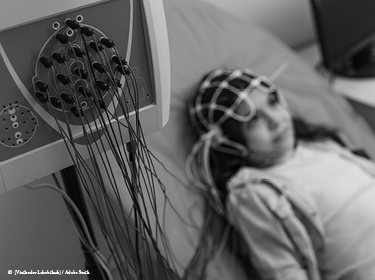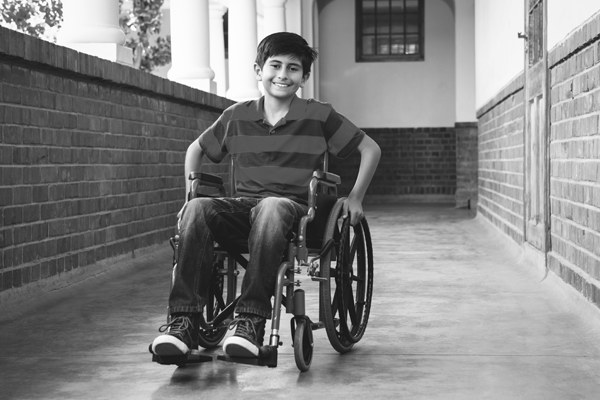A More Efficient Method for Diagnosing Electrical Status Epilepticus in Sleep?
A More Efficient Method for Diagnosing Electrical Status Epilepticus in Sleep? https://pediatricsnationwide.org/wp-content/uploads/2022/04/AdobeStock_167782003_Neuro2.jpg 375 280 Mary Bates, PhD Mary Bates, PhD https://secure.gravatar.com/avatar/c6233ca2b7754ab7c4c820e14eb518c8?s=96&d=mm&r=g- May 03, 2022
- Mary Bates, PhD

Calculating the spike-wave index of the EEG of just the first 100 seconds of sleep is enough for diagnosis.
Electrical status epilepticus in sleep (ESES) is an electrographic pattern in which epileptiform activity is dramatically activated by sleep. The ESES pattern is a key electrographic feature in several pediatric seizure disorders that vary in severity.
The classic measure used to identify ESES is the spike-wave index expressed as a percentage. However, there is disagreement on the best way to quantify the sleep-activated epileptiform activity and the portion of sleep electroencephalogram (EEG) used for spike-wave index calculations. Some methods use the EEG over the entire night of sleep to diagnose ESES, which is cost-intensive and time-intensive for both patients and clinicians interpreting the results.
In a recent study, researchers from Nationwide Children’s measured the reliability of the spike-wave index of the first 100 seconds of sleep as a tool for the diagnosis of ESES. Reviewing 140 long-term monitoring video EEG studies from 60 patients, two neurophysiologists calculated the spike-wave index of the first 100 seconds of sleep. The researchers compared this with the cumulative spike-wave index of three 5-minute bins of sleep from the beginning, middle, and end of sleep.
“One hundred seconds was a nice round number to use, but it ended up being representative of the record as a whole,” says Neil Kulkarni, MD, an attending pediatric neurologist at Nationwide Children’s and one of the study’s authors.
Fifty-seven percent of records had a diagnosis of ESES based on the first 100 seconds of sleep, while 54 percent of records had a diagnosis of ESES based on the method of using the sleep-wave index of three bins. This resulted in a diagnostic accuracy of 92%, sensitivity of 96%, and specificity of 88%.
According to Jaime Twanow, MD, section chief of neurology at Nationwide Children’s and one of the study’s authors, calculating the spike-wave index from the first 100 seconds of sleep could be a cost-effective tool to diagnose and guide the management of children with suspected or confirmed ESES while also optimizing the use of health care resources.
“This study nicely validated that this is a useful technique,” says Dr. Twanow. “We are at the midpoint of reaching our goal.”
Next, the researchers want to demonstrate that 100 seconds in the routine EEG that captures sleep is as useful as 100 seconds of sleep from an overnight EEG. They say this would be easier on patients and families while also making the calculation work less time intensive.
“There are a lot of kids that won’t need to stay in the hospital overnight and a lot of kids that won’t have to tolerate EEG for long periods of time,” says Dr. Kulkarni, who is an assistant professor of clinical pediatrics at The Ohio State University College of Medicine. “That also frees up beds for kids that may need them. It makes us more efficient in general and also makes our calculations easier.”
Dr. Twanow, who is also an assistant professor of clinical pediatrics and neurology at The Ohio State University College of Medicine, agrees.
“One of the exciting aspects of this work is that it has the potential to change how we take care of kids,” she says. “We are proud to move forward this work, which builds on the work pioneered by our colleagues, Drs. Dara Albert and Anup Patel.”
Reference:
Kulkarni N, Albert DVF, Klamer B, Drees M, Twanow JD. The Spike-Wave Index of the First 100 Seconds of Sleep Can Be a Reliable Scoring Method for Electrographic Status Epilepticus in Sleep. Journal of Clinical Neurophysiology. 2022 Jan 7. doi: 10.1097/WNP.0000000000000918. Epub ahead of print.
Image credit: Adobe Stock
About the author
Mary a freelance science writer and blogger based in Boston. Her favorite topics include biology, psychology, neuroscience, ecology, and animal behavior. She has a BA in Biology-Psychology with a minor in English from Skidmore College in Saratoga Springs, NY, and a PhD from Brown University, where she researched bat echolocation and bullfrog chorusing.
-
Mary Bates, PhDhttps://pediatricsnationwide.org/author/mary-bates-phd/December 27, 2016
-
Mary Bates, PhDhttps://pediatricsnationwide.org/author/mary-bates-phd/
-
Mary Bates, PhDhttps://pediatricsnationwide.org/author/mary-bates-phd/
-
Mary Bates, PhDhttps://pediatricsnationwide.org/author/mary-bates-phd/






